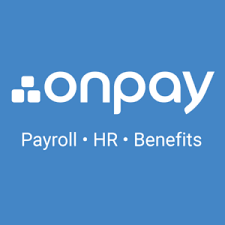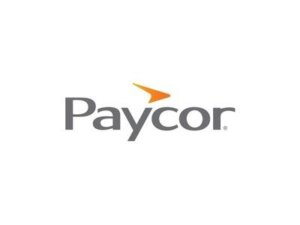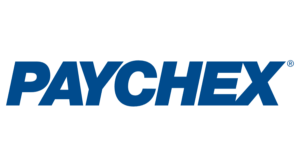Conducting a payroll audit can help your small business reduce employment costs and ensure compliance with federal, state, and local labor laws. Start the process of analyzing your company’s payroll to reveal errors and inefficiencies that reduce your bottom line.
How To Conduct a Payroll Audit in 8 Steps
Your small business payroll audit should have two main goals. First, you want to make sure that you have comprehensive payroll documentation for all your employees, and verify the accuracy of these records. After you fix any errors you uncover, the second step involves finding the issues in your internal processes that led to discrepancies and updating protocols to improve the accuracy of your company’s payroll records.
If you aren’t convinced of the importance of running regular payroll audits, consider these statistics:
- Employers paid about $6 billion to the IRS in payroll-related penalties in 2020 alone
- A survey from Intuit revealed that 25% of employees have received paychecks that contain errors
- 18% of employees surveyed by Intuit said they have received a late paycheck, which increases to 32% among those who work for a company with 20 or fewer employees
- Kronos reports that nearly half of employees will look for a new job after more than one paycheck error
- Up to 30% of U.S. employees are classified incorrectly, according to the National Employment Law Project
- 45% of small businesses have no accountant or bookkeeper on staff and 25% still have a paper payroll process, as revealed in data collected by Clutch.co
Small businesses are also more likely than larger businesses to experience payroll volatility. This phenomenon is characterized by high levels of turnover and other changes that increase the chances of errors and other issues.
Before You Begin
While the word audit conjures images of endless stacks of paperwork, you can streamline the process with these eight easy steps. Before you get started, you’ll need to gather the necessary reports from your paper accounting records or payroll software system.
Type of Payroll Report
Purpose
Company-wide payroll reports
Also called a payroll register or payroll journal, a comprehensive document that includes all the details of employee compensation, tax withholdings, and deductions
Employee time reports
Details about the number of hours worked per employee per pay period (weekly, bimonthly, monthly)
Individual employee reports
Detailed compensation, withholding information, and deductions for a single employee
Payroll tax reports
Quarterly and annual reports that detail taxable employee compensation and corresponding withholdings and tax liabilities
Cash requirements reports
Information about the amount of money your business needs to process payroll and the allocation of these funds
1. Analyze Your Payroll Roster
Download your payroll roster from your company’s accounting software. Once you have this document in front of you, review your entire payroll to confirm that it doesn’t include “ghost” employees who don’t actually exist, a sure sign of internal fraud. Verify each person’s full legal name, Social Security number, current address, and position at the business.
Take this time to remove anyone who no longer works for the business. This includes workers who are currently out on disability or family and medical leave. If you employ external vendors or contractors, the payroll audit offers an opportunity to check their contracts. Make sure they have been paid only the amount owed under the designated contract period.
2. Check Pay Rates and Hours Worked
Once you verify that your payroll only includes humans who actually work for your company, make sure that they are getting paid the correct amount for the correct number of hours. Unscrupulous employees who have access to the payroll system sometimes increase compensation rates or boost the number of hours someone works so they can embezzle money. The audit should look at every timesheet and paystub for every work for the entire period since you last conducted a payroll audit.
In addition to verifying hours worked and pay rates, make sure that you have accurately distinguished between hourly and salaried employees. You must also ensure the correct classification of exempt and nonexempt employees under the provisions of the Fair Labor Standards Act. Employees who are nonexempt must receive overtime pay for every hour they work over 40 hours a week. If these workers have not been compensated correctly, adjusting this issue and providing back pay accordingly can prevent state or federal sanctions.
3. Look Closely at Variable Payments
Make sure that any employee payments that diverge from the typical amount are supported by proof of authorization. The journal of your payroll system should have a separate section for variable pay apart from standard salaries and wages. Some of the most common types of variable payments include shift differentials, profit-sharing payments, commissions, and bonuses.
4. Review Off-Cycle Payments
You also want to pay special attention to payroll cycles that occur outside the typical amount. For example, if your company should have had 24 semi-monthly payroll cycles in the year since you last conducted an audit, you need to investigate unexplained extra cycles. While some such variances could be an error or occur when the company issues a bonus or other special incentive, they could also be a red flag for fraud.
5. Perform Payroll Reconciliation
In this step, check each payroll record against the company’s general ledger. This reconciliation represents the most important part of the payroll audit, and it typically takes more time than any other step. Double-checking the journal entries in your business accounting software that correspond to your payroll records ensures that the system transmitted this data correctly. It also confirms the correct calculation of taxable wages and payroll deductions.
6. Check Payroll Records Against Tax Forms
Next, you need to make sure that your payroll records match up with the amounts you reported on IRS Forms 940 and 941. Form 940, filed annually, reports tax your company withheld under the Federal Unemployment Tax Act. On your quarterly Form 941, you report withholding of federal income tax and Federal Insurance Contribution Act taxes. In addition to reconciling your payroll records against your federal tax forms, you also need to check against the corresponding state forms.
7. Locate and Pay Outstanding Tax Bills
Your payroll system likely creates automatic tax liability reports when you owe outstanding tax payments. This may occur if the system fails to make these payments when you hire someone living in a different state and do not enter a specific tax ID number for that state. In this situation, the payroll audit ensures that you can pay the outstanding amount and avoid costly IRS sanctions.
8. Establish or Improve Payroll Protocols
When done correctly, payroll audits should enhance your company’s processes to reduce the potential for errors and fraudulent activity. End each payroll audit with a wrap-up session where you discuss findings and determine how your business can avoid these issues in the future. If you don’t have a solid payroll protocol in place, consider these best practices:
- Direct supervisor approval of each payroll run
- A weekly deadline for timesheet submission
- Documentation in writing for variable payments such as bonuses
- Restricted access to payroll on an as-needed basis
- A single pay cycle for all employees
- Modern payroll software if you don’t already have this technology in place
- A paperless reporting process to automate the audit
- A regular review of state and federal labor laws to ensure ongoing compliance
- A system of checks and balances that divides payroll responsibilities among team members
In addition, if you don’t already have a pay policy in place, establishing this type of document can prevent issues such as employee misclassification, tax underpayment, and accidental and intentional time theft. Your company’s pay policy should include transparent details about employee classifications and determination of salaries, wages, raises, and promotions. This document also details the protocol for processing payroll, making changes to this process, and addressing errors that arise. This level of transparency not only reduces the likelihood of errors but fosters a trusting relationship with your workers.
Benefits of Conducting a Payroll Audit
While you may be reluctant to dedicate valuable internal resources to an annual audit, most small businesses realize a substantial return on this investment. Some of the advantages of conducting regular payroll audits include:
- Finding and correcting data entry and calculation errors
- Detecting and discouraging payroll fraud
- Identifying changes that need to be made, such as removing a terminated employee or adding a raise for a promoted worker
- Confirming accurate tax withholdings and payments
- Correcting the accounting for sick, personal, vacation and holiday time
- Verifying you are paying workers for the correct number of hours
- Remaining compliant with state and federal employment regulations
- Reducing your risk of an external audit by correcting problems before they are flagged by the IRS
- Evaluating the cost of your payroll software and user licenses relative to features and value
Issues in any of these areas could be costly for your business, and without regular audits, multiple problems with payroll can arise and go on for some time without notice.
As your business grows, a payroll audit could reveal the need for an employee audit. With this process, you review the company’s org chart and hiring plan to determine whether it aligns with your organizational goals.
Best Practices for Easy Payroll Audits
If you keep putting off the payroll audit process because you don’t have the time, money, knowledge, or staff, you’re not alone. Fortunately, you can take measures to make the audit easier and detect underlying issues that can cost even more to correct as they persist over time.
Especially if you do not have education in accounting, consider hiring an accountant or bookkeeper to conduct an internal audit on behalf of your business. Engaging professional services can reduce the risk of expensive payroll mistakes as well as save your time for your core business operations. You don’t necessarily have to bring on a full-time staff member; instead, hire a CPA at an hourly rate to help out when needed or outsource this job to a third-party firm.
If you prefer to keep the audit internal, it doesn’t have to take over your life at work. Instead, consider spreading the items on your audit checklist over the entire year and take on just a few tasks each month. You can also delegate the tasks among team members to reduce the workload associated with the audit.
Remember that putting off a payroll audit just means pushing the work down the road. Eventually, you may have no choice but to audit your payroll records when faced with an IRS audit or a U.S. or state Labor Department claim.
Using Accounting Software for Your Payroll Audit
While manually entering payroll may work fine when you have just one or two workers, it dramatically increases your risk for errors in the process of paying your employees. You can also run into issues if you rely on old, outdated software to run payroll. Fortunately, small businesses can choose from several free payroll software options.
When selecting the right accounting software for your payroll audit, consider these factors:
- Whether the system can integrate with your company’s existing hardware and software
- The software’s ability to issue direct deposits, paper checks, or both
- The learning curve associated with using and mastering the system, including available training resources
- Whether it offers a self-service portal where employees can enter and verify their own information as needed
- The number of employees you have, since some systems limit the number of payroll records you can create
If free software options for payroll don’t quite meet the needs of your business, expect to pay about $30 per month for a flat-fee service or $4 to $12 per month per individual employee access license.
Frequently Asked Questions (FAQs) for How to Conduct a Payroll Audit
These are the most common questions small business owners and administrators ask about the process of conducting a successful payroll audit.
Bottom Line on Payroll Audit
Auditing payroll records for your small business can seem like an arduous, expensive process. Fortunately, each time you successfully conduct an audit that results in improvements to your payroll system, you reduce the likelihood of errors. This in turn will streamline and shorten the next planned payroll audit.
Following these simple steps can take the stress out of analyzing your company’s payroll records. If you don’t already have an organized system in place, regular audits can significantly reduce the chance of problems with your company’s payroll.
 Sections of this topic
Sections of this topic















